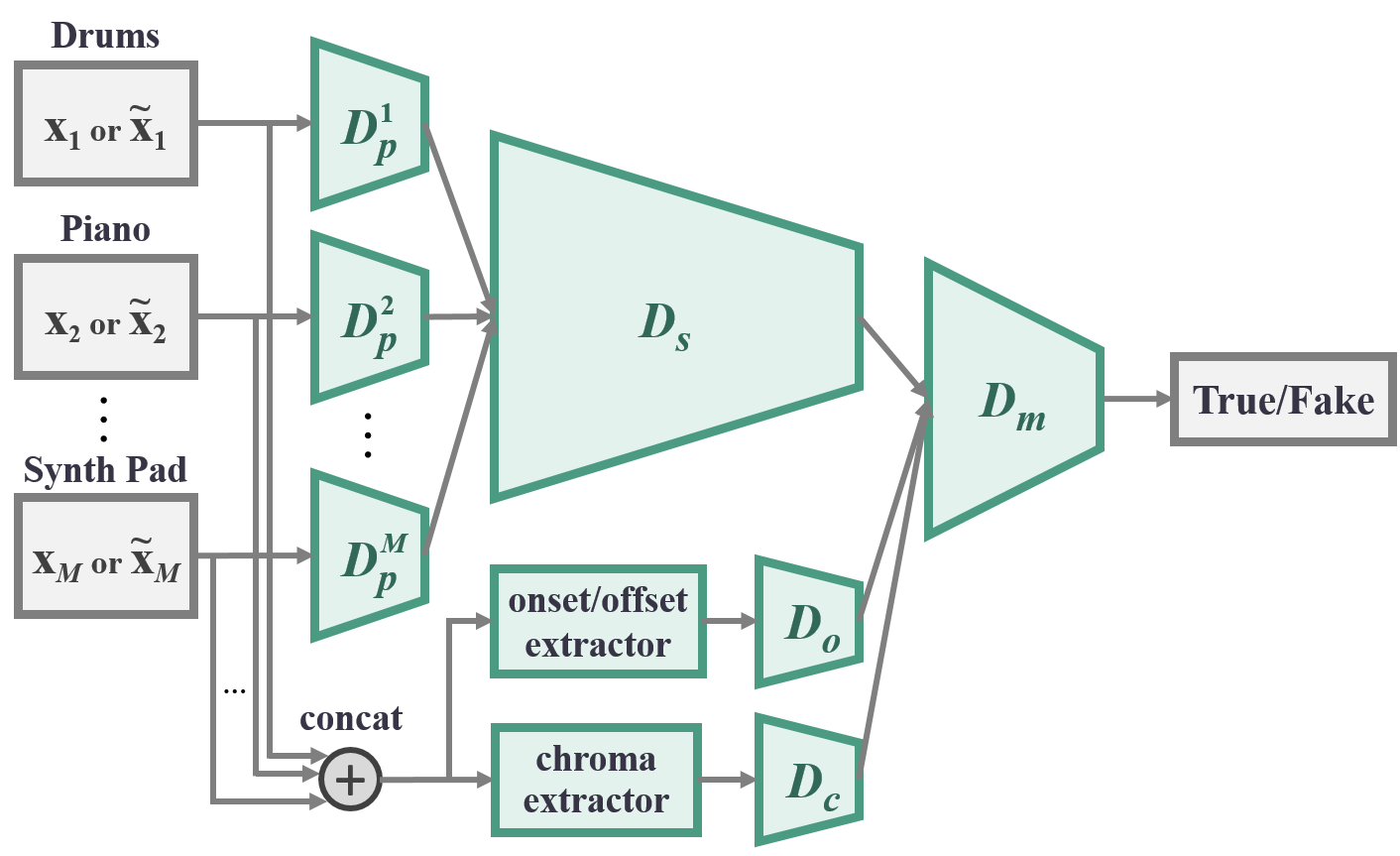BinaryMuseGAN
Model

The design is based on MuseGAN [1] as differences summarized below:
- Instead of using multiple generators and shared/private input vectors to handle the multi-track interdependency, we use shared/private generators with one single input vector.
- Instead of using one single discriminator, we introduce shared/private design to the discriminator.
- To help the discriminator extract musically-relevant features, we add to the discriminator an onset/offset stream and a chroma stream.
Generator
The generator G consists of a shared network Gs followed by M private network Gpi (i = 1 … M), one for each track. The shared network is responsible for producing a high-level representation of the output musical segments that is shared by all the tracks. Each private network then turns such abstraction into the final piano-roll output for the corresponding track.
This design reflects the intuition that different tracks have their own musical properties (e.g., textures, common-used patterns, playing techniques), while jointly they follow a common, high-level musical idea.

Refiner
The refiner R is composed of M private networks Ri, (i = 1 … M), one for each track. The refiner aims to refine the real-valued outputs of the generator into binary ones rather than learning a new mapping from G(z) to the data space. Hence, we draw inspiration from residual learning and propose to construct the refiner with a number of residual units. The output layer of the refiner is made up of either DBNs or SBNs.

The refiner network.
(The tensor size remains the same throughout the network.)

Residual unit used in the refiner network.
(The values denote the kernel size and the number of the output channels.)
Discriminator
Similar to the generator, the discriminator D consists of M private network Dpi (i = 1 … M), one for each track, followed by a shared network Ds. Each private network first extracts low-level features from the corresponding track of the input piano-roll. Their outputs are then concatenated and sent to the shared network to extract higher-level abstraction shared by all the tracks.
In the onset/offset stream, the differences between adjacent elements in the piano-roll along the time axis are first computed, and then the resulting matrix is summed along the pitch axis, which is finally fed to Do.
In the chroma stream, the piano-roll is viewed as a sequence of one-beat-long frames. A chroma vector is then computed for each frame and jointly form a matrix, which is then be fed to Dc.
Note that all the operations involved in computing the chroma and onset/offset features are differentiable, and thereby we can still train the whole network by back propagation.
Finally, the intra-bar features extracted from the three streams are fed to Dm to extract inter-bar features and to make the final prediction.

Reference
- Hao-Wen Dong, Wen-Yi Hsiao, Li-Chia Yang, and Yi-Hsuan Yang, “MuseGAN: Multi-track Sequential Generative Adversarial Networks for Symbolic Music Generation and Accompaniment,” in AAAI Conference on Artificial Intelligence (AAAI), 2018.